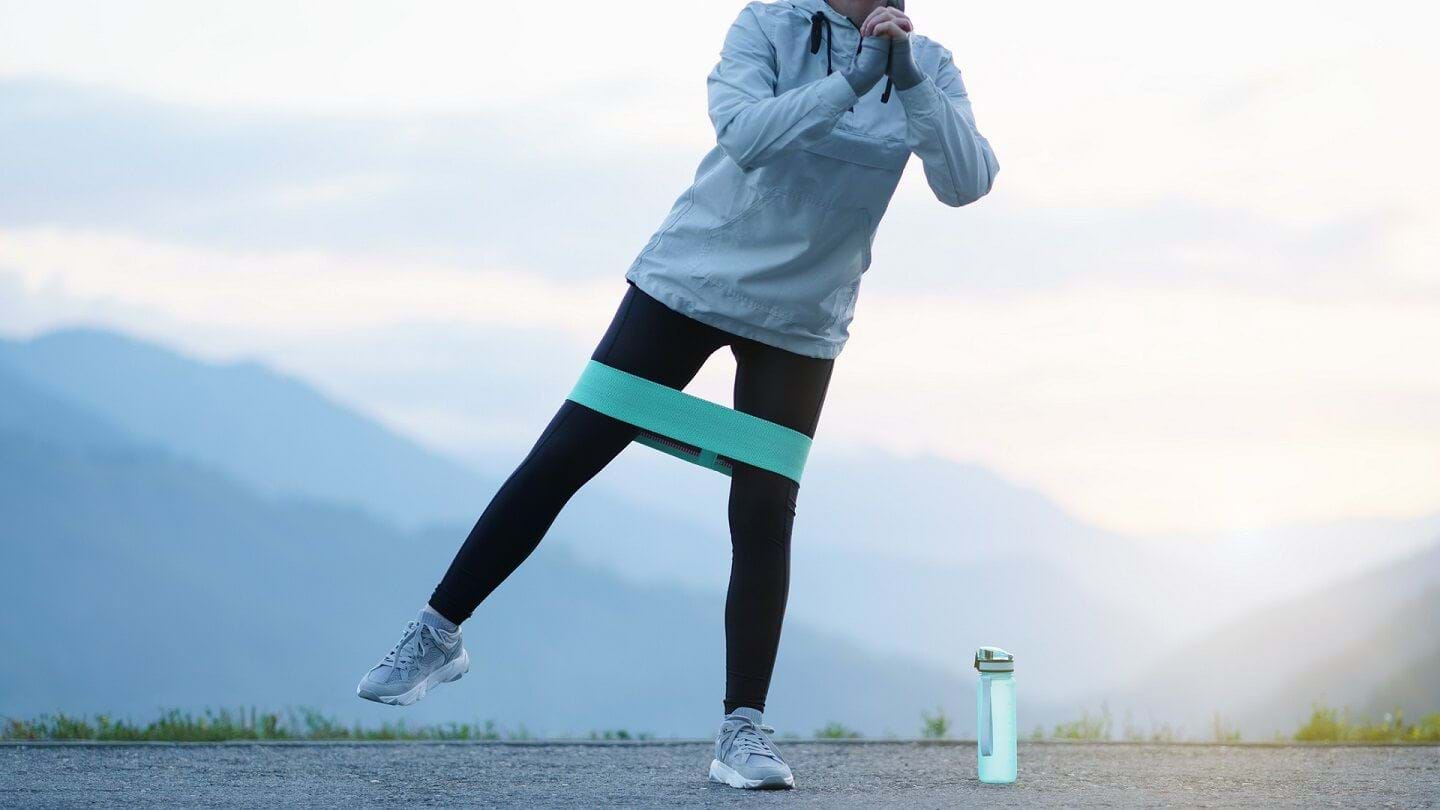Standing Hip Abduction
What Is Standing Hip Abduction?

Standing hip abduction is a resistance band exercise that isolates the important muscles of the outer hips, glutes, and thighs. These muscles are responsible for rotating the leg outwards and are used in any lower body exercise or sideways movement.
The abductors play a key role in stabilising the pelvis during single leg movements and can help prevent knee and lower back pain by keeping the hips and knees aligned. Strengthening the hip abductor muscles is crucial for lower body stability, helping you lift more weight with less risk of DOMS or injury.
Most leg exercises we do in the gym work the front and back of the legs, so it's important to do specific exercises for the inner and outer thighs. Standing hip abduction is a versatile way to work the hip abductors, and can be done as part of a warm up, as a finisher, or with other abductor and adductor exercises for a well-rounded lower body workout.
The use of a resistance band in standing hip abduction provides constant tension throughout the movement, challenging the muscles more effectively than bodyweight alone. Doing standing hip abductors also uses your core muscles, lower back, and abs. Since one of the major benefits of strengthening the abductors is reducing the risk of lower back injury, choosing an option that has extra core recruitment is even more efficient.
Resistance bands are the ultimate portable workout tool, and standing hip abduction is an exercise you can anywhere. By regularly including standing hip abductions in your routine, you can improve hip stability, enhance lower body strength, and potentially reduce the risk of common lower body injuries.
Check out some other abductor exercises: Seated Hip Abduction, Side Lying Hip Abduction, Cable Hip Abduction, Banded Clamshells, Side Plank Clamshell
Commonly Asked Questions About Standing Hip Abduction
The amount of standing hip abductions you should do will vary depending on your goal and the resistance band being used. Aim for a number of reps that are challenging but you can maintain good form, and aim to increase this over time as you get stronger.
The standing hip abduction recruits more stabilising muscles than side lying abduction because your body needs to hold itself still whilst you are standing up. Both options are a good choice of bodyweight or banded abductor exercise.
Hip abduction can help to build strength and size in the glutes because it targets the outer muscles of the hips and glutes themselves, including the gluteus medius and gluteus minimus. For best results, combine with compound exercises that load the glutes such as hip thrusts.
Hip abduction exercises are not bad for your hips, in fact they are important for building strength in the muscles that stabilise the hips and pelvis. Stronger hip abductor muscles help you lift more weight safely, and can help guard against common injuries like lower back pain and knee pain.
Standing Hip Abduction Tips
Brace your core and glutes as you lift the leg out to the side.
Keep your torso straight, don’t lean to one side.
Putting your hands on your hips can help you isolate the target muscles.
Angle the foot of the working leg in slightly to feel a stretch down the outside of the leg.
How To Do Standing hip Abduction
Loop a resistance band around your legs, just above the ankles.
Start by standing with your feet hip width apart.
Tense your core and glutes as you lift one leg out to the side as high as you can comfortably.
Focus the effort in the small muscles at the side of your hips.
Lower your leg back to the start position and complete your reps then switch sides.